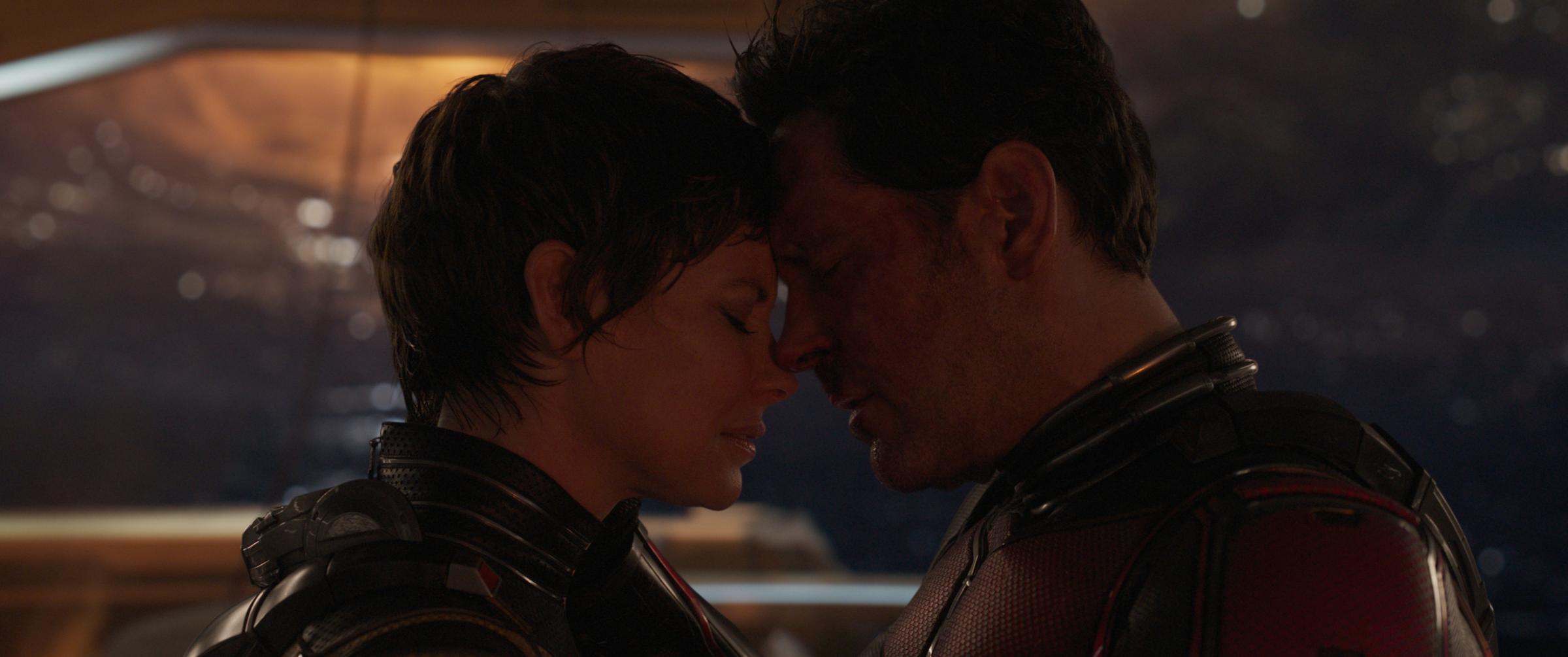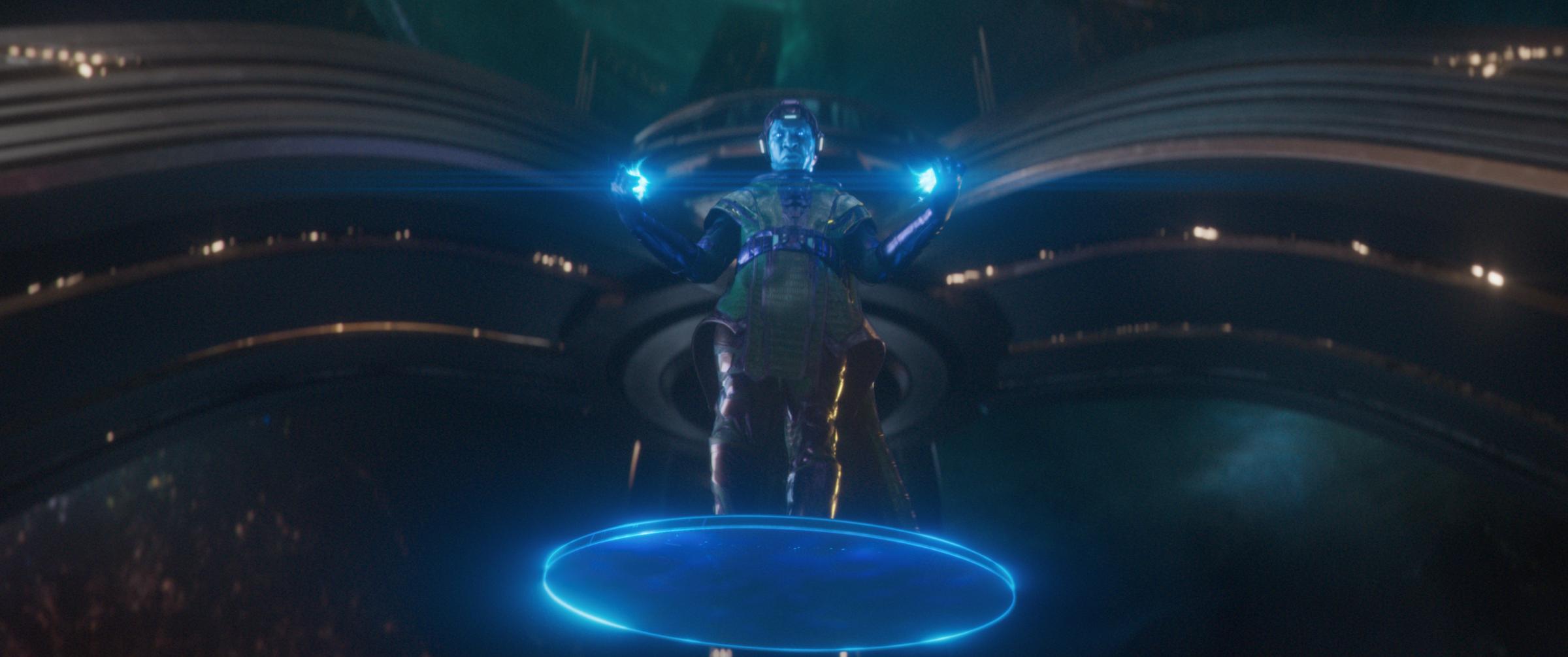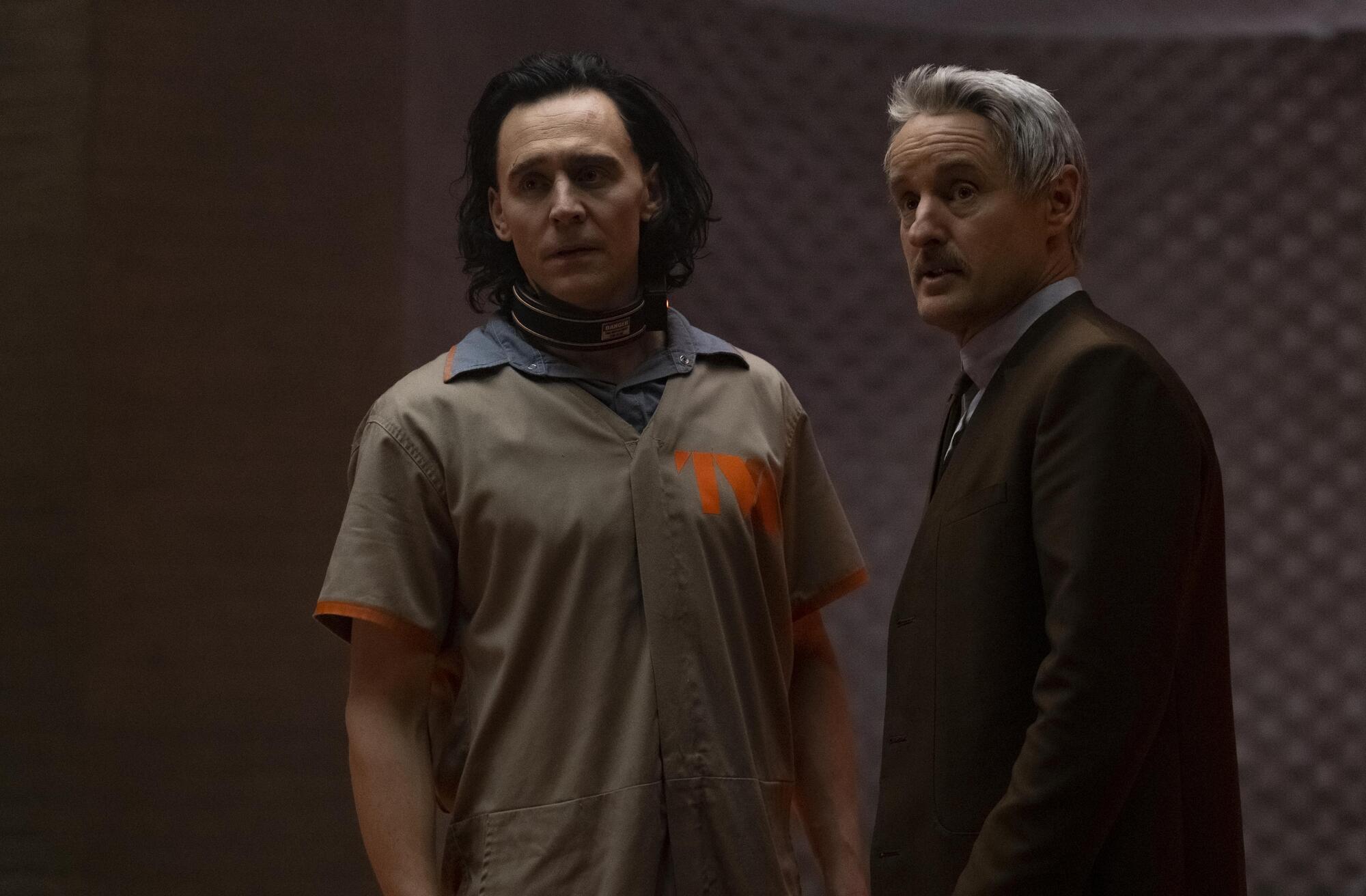This post contains spoilers for Ant-Man and the Wasp: Quantumania and Season 1 of Loki
It looks like we’re going get a lot more versions of Kang the Conquerer in the Marvel Cinematic Universe. Marvel Studios announced last year that Jonathan Majors’ Kang will be the next big bad in the MCU. Though Ant-Man and the Wasp seem to have defeated Kang by the end of Ant-Man: Quantumania, sending him even further into the Quantum Realm with little hope of escape, the title of the upcoming Avengers film, Avengers: Kang Dynasty, suggests that perhaps this particular villain isn’t done with Earth’s mightiest heroes quite yet.
We get hints of how Kang—or a different version of Kang from a parallel timeline—might return in Quantumania’s mid-credits and post-credits scenes. In one scene, we see different variants of Kang from different timelines convene and talk, a preview of a power struggle we may see play out in Kang Dynasty. In the second, we see what is presumably a scene from the second season for the Disney+ series Loki in which the titular character (played by Tom Hiddleston) hunts down a version of Kang in a theater in the early 20th century.
Some of the Kang variants featured in these scenes will be familiar to Marvel comics readers. Kang has taken on many different guises in the comic books. Occasionally he even travels back in time and uses advanced technology to rule over a group of people in a particular period in history. Two famous versions of Kang that pop up in the Quantumania end-credits scenes are Victor Timely, an early 1900s industrialist, and Rama-Tut, a pharaoh in ancient Egypt.
Confused about why there are so many different Kangs and what this all has to do with Loki and Kang Dynasty? Here’s a full breakdown of both Ant-Man and the Wasp: Quantumania end-credits scenes.
What happens at the end of Ant-Man and the Wasp: Quantumania?

Back in Avengers: Endgame, the MCU introduced the concept of the multiverse—that there are parallel timelines in which different versions or “variants” of each character can live. Changing the past can create a branching timeline, for good or ill. The concept has been central to shows like Loki in which Loki (Tom Hiddleston) creates a branching timeline by diverging from his destiny and Doctor Strange in the Multiverse of Madness, which features a character named America Chavez (Xochitl Gomez) who can travel across the multiverse.
We meet another multiversal traveler in Quantumania: Kang the Conquerer (Majors). Kang is a powerful character from the comics who hails from the 30th century and can hop in and out of different timelines. As his name suggests, his goal is to conquer the entire multiverse.
Sign up for More to the Story, TIME’s weekly entertainment newsletter, to get the context you need for the pop culture you love
We learn in Quantumania that Kang’s other variants feared him and banished him to the Quantum Realm (essentially the realm where subatomic beings live). Kang spends the entire movie trying to get out, and Ant-Man (Paul Rudd) and his family try to keep Kang trapped. In the final fight, Kang says that he knows how the multiverse ends and if he does not reach the surface world, something terrible will happen. He vaguely alludes to the other Kang variants doing something bad. Ant-Man and The Wasp (Evangeline Lilly) manage to send Kang even deeper into the Quantum Realm and escape to the surface world themselves. Life returns to normal, though Ant-Man secretly wrestles with whether he has doomed their timeline by not setting Kang free.
What happens in the first Quantumania end-credits scene?

In a mid-credits scene, three different variants of Kang (all played by Majors) meet and discuss the threat of Kang the Conquerer. One of the Kangs, dressed like a pharaoh, has called all the other Kang variants, and the camera pans out showing an arena in which thousands of Kangs (most of whom look like Majors but some of whom have different, alien forms) have convened.
Who is Rama-Tut?
Presumably the pharaoh version of Kang is Rama-Tut from the Marvel Comics. In one timeline, a young man named Nathaniel Richards discovers that he’s destined to become Kang the Conquerer. He briefly tries to resist that path and becomes a superhero named Iron Lad. But eventually he embraces his future as a supervillain. For complicated reasons, Nathaniel decides to travel back to Ancient Egypt and take over the kingdom using advanced technology. He rules as a pharaoh and renames himself Rama-Tut.
What happens in the second Quantumania end-credits scene?
The scene at the very end of the credits shows Kang or a Kang variant (again, played by Majors) giving a presentation in an early 1900s show about the fabric of space-time. In the audience, we see two characters from the show Loki: Loki himself and a man names Mobius (Owen Wilson). Mobius is an employee of something called the Time Variance Authority (TVA), but more on that later. Mobius tells Loki that Kang doesn’t look as menacing as Loki made him out to be. Loki reassures Mobius that this is the right guy.
How does the Quantumania end-credits scene set up Season 2 of Loki?

If you haven’t watched Loki, a quick refresher. That show centers on a variant of Loki running away from a group called the TVA. The TVA’s responsibility is to “prune” (i.e. destroy) branching timelines that aren’t part of the one “true” timeline and kill variants of characters we’ve met in the MCU. The Loki variant in the show meets many other versions of himself, including a woman named Sylvie (Sophia Di Martino). They radicalize Mobius by convincing him the TVA is killing innocent people. Together, they hunt down the head of the TVA, who turns out to be a Kang variant called He Who Remains.
He Who Remains explains that the various versions of himself learned to traverse the multiverse, met, and at first shared knowledge in peace. But some particularly nasty versions of him wanted to conquer all the timelines. A multiversal war broke out. He Who Remains managed to defeat the other variants and created the one true timeline to maintain order and prevent future battles among the timelines. Yes, destroying branching timelines kills trillions of people, but it’s worth it to keep those in the one true timeline alive.
He Who Remains warns that if Loki and Slyvie kill him they will simply unleash many other scarier variants of him, like Kang the Conquerer. Sylvie kills him anyway, and Loki finds himself in a version of reality where Kang the Conquerer has taken over the TVA.
Presumably, Loki and Mobius are now on the hunt for Kang in order to reverse the effects of what Sylvie did or at least stop him from conquering the entire multiverse. We know a version of Kang resides in Wisconsin in 1901 in the comics and goes by the name Victor Timely. That’s most likely the version Loki has found.
Who is Victor Timely?
Inventor and industrialist Victory Timely is one of Kang’s many aliases. In a comics storyline, Kang the Conquerer travels to the early 20th century, takes on the name Victor Timely, and founds the city of Timely, Wisconsin. Victor introduces advanced computer technology from the future to the people there, and Timely, Wisconsin becomes a center of technological advancement.
More Must-Reads from TIME
- Donald Trump Is TIME's 2024 Person of the Year
- Why We Chose Trump as Person of the Year
- Is Intermittent Fasting Good or Bad for You?
- The 100 Must-Read Books of 2024
- The 20 Best Christmas TV Episodes
- Column: If Optimism Feels Ridiculous Now, Try Hope
- The Future of Climate Action Is Trade Policy
- Merle Bombardieri Is Helping People Make the Baby Decision
Write to Eliana Dockterman at eliana.dockterman@time.com